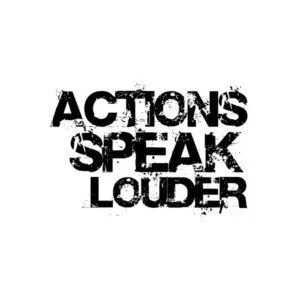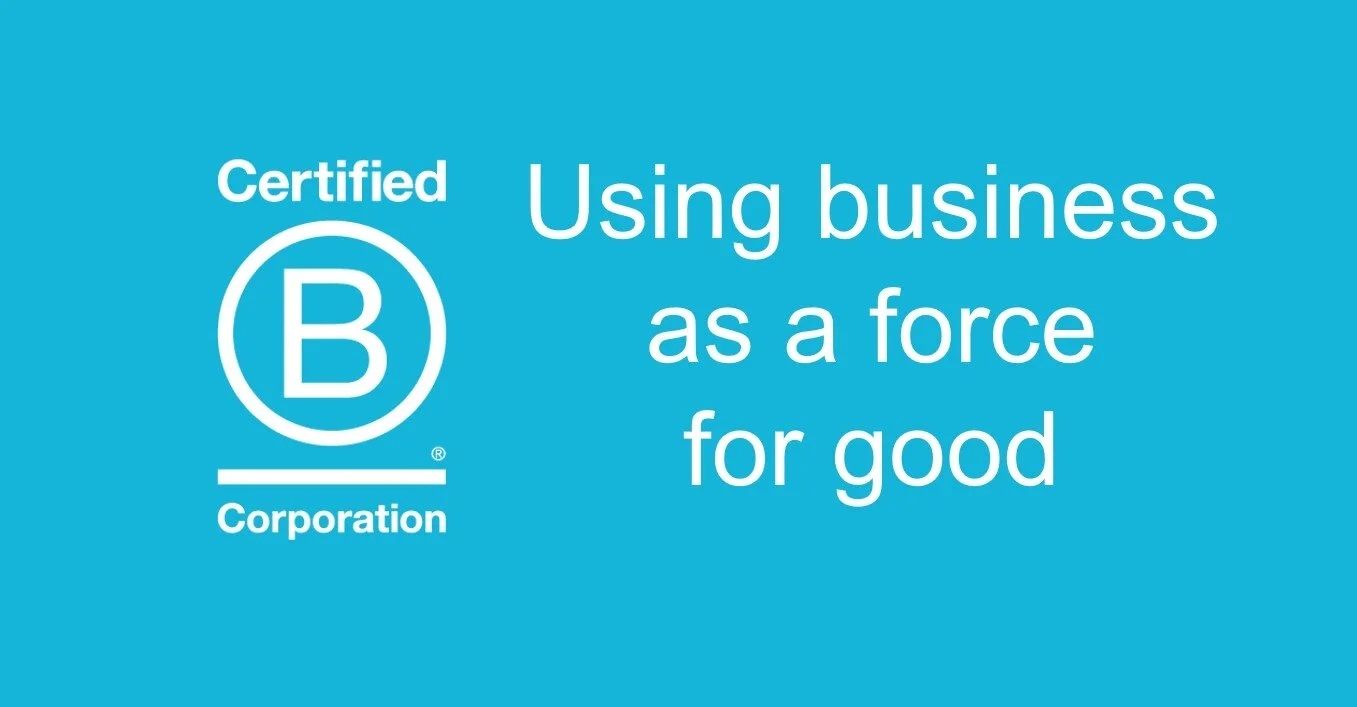If we want to be conscious capitalists who use business as a force for good, what exactly does that look like in practice? What does a mission-driven business that wants to help people and protect the environment do differently compared to one that is focused solely on profits?
What actions can individual companies take to address social and environmental challenges that are still so prevalent today?
The suggestions below reflect specific practices that we as business owners can implement to change our organisations from within. If you’re not the business owner, you can still raise these issues within your company.
For all those companies that have issued statements on their website about social and environmental issues, I offer these as follow-up actions that can make a difference.
Using a Framework for Improvement
The best framework that I’ve found to help companies evaluate their impacts and make practical improvements is the B Impact Assessment (BIA).
It presents best practices that can be implemented by sole traders up to multinational corporations to evaluate and improve their company’s operations.
This is a free tool that can be used by anyone, regardless of whether you want to become a Certified B Corporation.
Among the many practices listed on the BIA are some that can help a company to take meaningful action to address many relevant challenges. They can be implemented by all companies, regardless of size, to begin to rectify the myriad societal problems that we face.
I believe that it’s just the right thing to do, but if you need more of an incentive, it’s worth noting that customers across a broad spectrum are asking brands to make a greater impact with these issues.
Put Stakeholders First
We have inherited a system that prioritises shareholder benefit and profits for a few, but not for all. The entire approach that B Corps take upends this by prioritising all stakeholders, not just the shareholders.
B Corps challenge shareholder primacy and instead ask companies to consider all stakeholders impacted by a company, including customers, employees, suppliers, and community members.
By engaging stakeholders, companies can begin to understand their needs and concerns and work to make sure that the impact they’re having on those individuals is a positive one.
Like so much of the BIA, this abstract concept of putting stakeholders first is then operationalised into specific practices that a company can adopt. The options range from small but worthwhile steps to more impactful commitments.
The BIA specifically mentions having mechanisms for reaching out to underrepresented groups, which can involve working with local community members and organisations. This ensures that the company is not operating in a silo with only one set of voices is being heard.
Listening to the concerns and needs of people in the community is a start. Addressing their concerns, designating someone to be responsible for following-up, and reporting on those results is more impactful.
Pay Living Wages
Black, Asian and Minority Ethnic (BAME) tend to be more highly represented in low-wage jobs and can be disproportionately affected by low wages. This has been laid bare during the pandemic, as BAME individuals are more likely to be essential workers who don’t have the luxury of economic protection in place yet are putting their lives at risk for low wages.
If you find that fewer than 75% of your employees are earning a living wage, that becomes an opportunity to make a change. The BIA is designed to help companies identify those potential opportunities, benchmark progress, and set specific goals to make improvements.
This particular practice can help a company move from vague statements about taking care of their people to ensuring that workers are being paid a wage that they can actually live on.
Review Hiring Practices and Conduct a Pay Equity Analysis
Including a statement on your job descriptions about your company’s commitment to diversity, equity, and inclusion is a good start, but it’s not enough.
Data shows that racism or gender bias is apparent in hiring practices, to the point of determining who even gets called for a job interview. This has not changed over time, and racial and gender discrimination still persists. Even after getting jobs, there is a significant wage gap between white and black employees (and also between white employees and other people of colour) and also between male and female employees.
Companies can take direct action to address this problem in a number of different ways. A statement is better than nothing, but concrete, tangible steps to remove pay gaps and unconscious bias from the hiring process are better.
In addition, providing training about diversity, equity and inclusion is important. Particular attention can be paid to educating employees about anti-racism. The B Corp community has compiled many useful antiracism resources.
Ensure Diversity in Management
Having diverse perspectives has been shown to boost a company’s profitability. The World Economic Forum has laid out the business case for diversity, noting that companies with diverse management teams have a 19% revenue increase compared to less diverse teams.
The reason is simple: A diversity of perspectives can present greater opportunities for innovation in a dynamic business environment. Good leaders know that listening to other perspectives challenges their own thinking, prevents groupthink, yields creative solutions, and builds empathy.
Despite the many benefits, however, Black people, People of Colour, Women, and others are less represented at higher management levels.
If your company has a statement on equity, diversity, and inclusion but finds that there’s no diversity among workers, in management, and at the board level, this reflects a discrepancy between words and actions. As the old adage goes, you can’t manage what you don’t measure.
If there isn’t much diversity at the management level, the company has an opportunity to set a goal to increase that percentage and identify specific strategies to meet that goal. This may include addressing hiring practices, creating an inclusive environment, and providing professional development opportunities.
Focus Charitable Giving Practices
Many calls to action, have asked for financial contributions to organisations that are actively working in support of communities in need.
Options to consider include developing a formal statement about your company’s philanthropy, so that you’ve considered how to align your charitable giving for a specific outcome. For example, if your company is committed to a particular goal, you can develop a formal statement around that and screen the organisations that receive your donations so that you select ones that are advancing that specific work.
You can take that a step further by making a formal commitment, such as a percentage of annual revenues, a monthly contribution, or a set amount per sale.
Another opportunity is to allow your employees to select the organisations that your company will contribute to and matching their donations. This could be particularly meaningful for employees to donate to organisations that they are personally connected to or believe in. (Resource Generation provides a helpful resource for employees who may want to move beyond charitable giving to wealth redistribution.)
Support Underrepresented Suppliers
Choosing to explicitly support underrepresented suppliers, including those that are owned by BAME, women and those who may be differently abled, can shift the flow of capital in our society, helping to bridge the wealth gap.
Is your company working with local businesses or are you buying from corporations that have no stake in your community? Are you intentionally choosing to work with business owners who may not have had equitable access to opportunities?
Two basic practices that anyone can start with are tracking supplier diversity and establishing a policy to support suppliers from underrepresented populations.
These are important steps because they will help you to set a benchmark that you can track over time and then establish guidelines that your company can follow to diversify your supplier base.
Beyond that, you can set targets, which will help to actively seek out diverse suppliers. You may also consider establishing a formal supplier diversity program for your company.
Commit to Addressing the Climate Crisis
The climate crisis is one of the biggest threats facing humanity today.
To reduce greenhouse gas emissions, companies need to begin by calculating their carbon footprint so that they can measure and manage their emissions. Beyond that, they can then set reduction targets, which will involve identifying specific changes that they can make to reduce their emissions.
Every company can monitor and record their emissions and set reduction targets, ideally working towards a Net Zero commitment by 2030.
Getting Started
These examples are just the beginning. So much needs to be done.
The practices listed here can, and must, work alongside numerous other efforts that are underway and desperately needed to end systemic racism. Policymakers, activists, educators, parents, religious leaders, consumers, investors, and everyone who cares about justice has a role to play.
We can start by doing this work within our own organisations. As business owners, we have the responsibility to set the course for our companies. Employees also have a role to play, by advocating within your organisations for change. We constantly need to measure what we are doing and improve whatever and whenever we can.
I believe that we’re at a watershed moment in history, and we have the responsibility and obligation to ensure that all the great words and statements that we make do not evaporate over time, only to be forgotten.
The fear, anger, and despair that we feel at the injustice around us and the way we have overexploited the planet’s resources can be channelled into our work, to rectify the wrongs of the past and present.
Let’s get to work.







